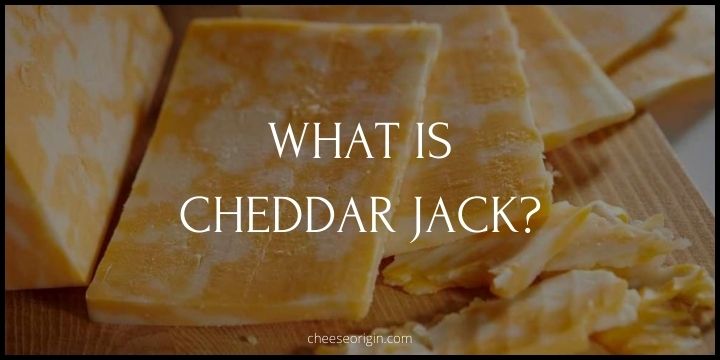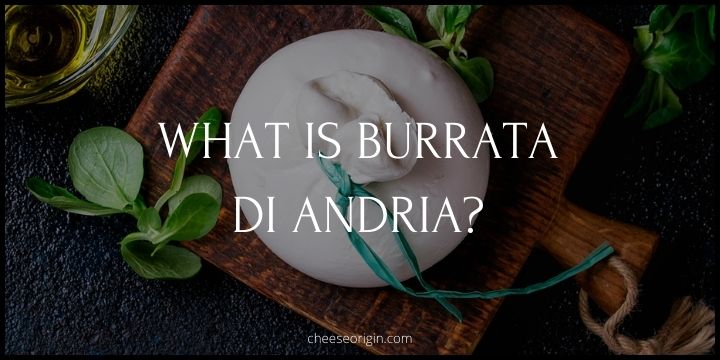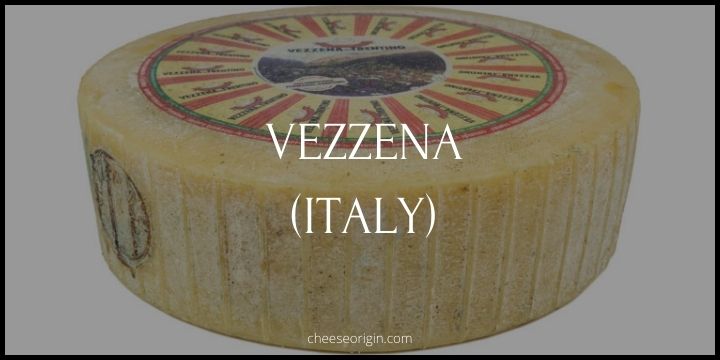What is Cheddar? The Global Favorite in the World of Cheese
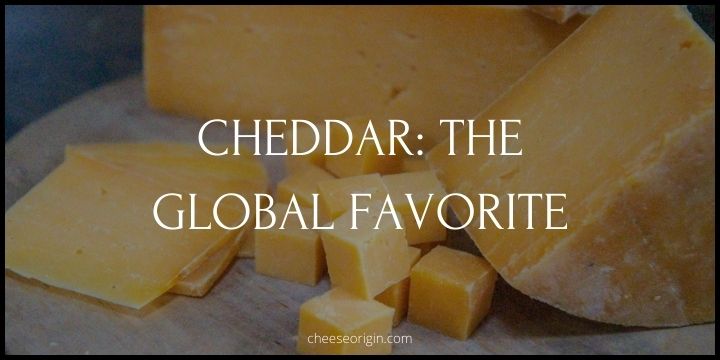
In the vast world of cheese, one name stands out for its universal appeal and rich, distinctive flavor: Cheddar.
The beauty of Cheddar lies not only in its robust and tangy flavor profile but also in its remarkable versatility.
Whether it’s melted into a comforting bowl of macaroni and cheese, layered within a gourmet burger, or simply enjoyed with a glass of wine, Cheddar cheese adds a touch of culinary magic to any dish.
This post aims to delve deeper into the fascinating world of Cheddar, exploring its historical roots, production process, and the multitude of ways it can delight your palate.
So, whether you’re a seasoned cheese connoisseur or a curious foodie, join us as we uncover the story behind one of the world’s most beloved cheeses – the Cheddar.
Also read: What’s the Difference Between Cheddar and American Cheese?
Quick Facts About Cheddar
| Fact | Details |
|---|---|
| Origin | Cheddar cheese originated in the English village of Cheddar in Somerset. |
| Type | It is a hard and sharp-tasting cheese. |
| Aging Process | Cheddar cheese is typically aged between 9 to 24 months. The aging process determines the flavor intensity. |
| Color | Its color ranges from white to pale yellow. Some cheddars are dyed to give them a deep orange color. |
| Nutrition | It is high in protein and calcium but also high in saturated fat and calories. |
| Uses | Cheddar is versatile and can be used in a variety of dishes like sandwiches, macaroni and cheese, or as a topping on baked potatoes. |
| Varieties | There are many varieties of cheddar including Mild, Sharp, Extra Sharp, and Aged. Each has a unique taste and texture. |
What is Cheddar?
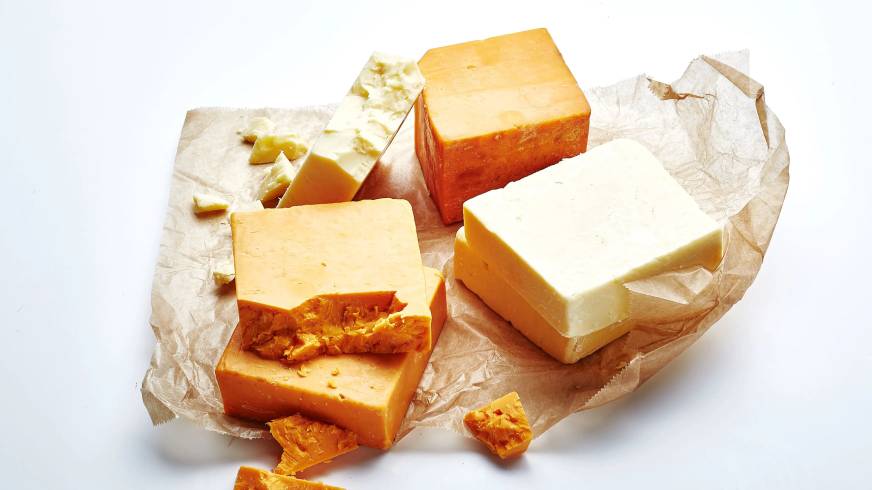
Cheddar cheese, a staple in many kitchens, is a fascinating product with a rich history and a diverse range of flavors and textures. It originated from the small village of Cheddar in Somerset, England, back in the 12th century, making it one of the oldest known cheeses. The term “cheddar” now doesn’t just refer to cheese made in this specific area, but rather a particular method of cheese-making referred to as “cheddaring.”
The aging process plays a significant role in the characteristics of cheddar. Young cheddar, often called mild cheddar, is usually aged for 2-3 months, resulting in a softer texture and a gentle, creamy flavor. On the other hand, mature or sharp cheddar is aged for over a year, developing a firmer texture and a robust, tangy flavor. Some extra mature cheddars are even aged for several years, intensifying their taste and crumbliness.
Interestingly, the color of cheddar can vary from natural white or pale yellow to deep orange. This variation is due to the use of a natural dye called annatto, which was traditionally added to give the cheese an appealing golden hue, signifying high-quality milk with a high level of beta-carotene. Today, the color doesn’t necessarily indicate quality, but more so tradition and preference.
Cheddar is incredibly versatile in culinary applications. Its ability to melt smoothly makes it perfect for grilled cheese sandwiches, macaroni and cheese, or as a topping for burgers. At the same time, its robust flavor makes it a great addition to cold platters, paired with fruit, or simply enjoyed on its own.
In terms of popularity, cheddar is a superstar. It’s the most consumed cheese in both the UK and the US, showcasing its wide acceptance and love among cheese enthusiasts. So, whether you’re enjoying a sharp, mature slice or a soft, mild piece, remember the centuries-old tradition and craft that goes into each bite of cheddar cheese.
What Does Cheddar Taste Like?
The taste of cheddar cheese can vary greatly depending on its age, but it’s generally described as having a nutty flavor with a slight hint of sweetness. Cheddar is known for its rich and complex flavor profile that becomes more pronounced as it matures.
Young or “mild” cheddar, which is usually aged for about 2-3 months, has a creamy and subtle flavor with a softer texture. It’s relatively mild, making it a versatile ingredient in cooking and baking.
As cheddar ages, it develops a sharper, more robust flavor. “Mature” or “sharp” cheddar, typically aged for over a year, has a stronger, tangier taste and a firmer texture. It’s often described as having a complex, deep, slightly earthy flavor that can leave a bit of a bite on the palate.
“Extra mature” or “extra sharp” cheddar, aged for several years, has an intensely rich, tangy flavor and a crumbly texture. This type of cheddar can have a slight crunch due to the formation of calcium lactate crystals that occur during the long aging process.
Regardless of age, cheddar generally has a smooth and creamy mouthfeel that balances its flavors well. It’s this unique combination of taste and texture that has made cheddar one of the most popular cheeses worldwide.
Cheddar Tasting Notes
- Color: Cheddar cheese can range in color from a natural pale yellow to a deep orange, depending on whether coloring agents like annatto have been used.
- Texture: The texture of cheddar changes as it matures. Young cheddar is smooth and semi-hard, while mature cheddar becomes increasingly firm and crumbly. Extra mature cheddar may even develop small, crunchy calcium lactate crystals.
- Aroma: Cheddar has a distinct aroma which can vary from relatively mild in young cheddar to quite strong and tangy in mature cheddar. The aroma can often hint at the flavor profile of the cheese.
- Flavor: Young cheddar typically has a gentle, creamy flavor, while mature cheddar has a more robust, nutty taste. As it ages, cheddar can develop complex flavor notes including hints of caramel and a certain earthiness. Extra mature cheddar is intensely rich and tangy, with a long-lasting flavor.
- Aftertaste: The aftertaste of cheddar can be quite long, particularly for mature versions. It’s usually rich and tangy, leaving a memorable impression on the palate.
- Pairings: Cheddar pairs well with a variety of foods and beverages. Young cheddar works well with light red wines and lagers, while mature cheddar can stand up to stronger drinks like dark ales, stout, and full-bodied red wines. Food-wise, cheddar complements everything from apples and grapes to crackers and dark chocolate.
Where Did Cheddar Originate?

Cheddar cheese, one of England’s oldest and most beloved cheeses, traces its roots back to the 12th century. The cheese’s namesake, Cheddar Village, is nestled in the heart of Somerset, England. It was here that the first recorded production of this distinctively tangy and hard cheese took place.
Cheddar cheese has a rich history intertwined with England’s past. Some historians suggest that the origins of Cheddar cheese may even date back to the Roman Empire, whose conquest of southern England led to the spread of various cheesemaking practices.
Despite changes over the centuries and the introduction of factory production, Cheddar cheese has retained its traditional essence.
It’s typically made from unpasteurized cow’s milk, sourced from cows grazing in the lush pastures surrounding Cheddar.
This pastoral diet influences the milk, and subsequently, the flavor of the cheese.
Why is Cheddar Cheese so Tasty?
Cheddar owes its delicious taste to a combination of factors that start with the quality of the milk used and extend through the entire cheesemaking process.
The rich, creamy milk, often from grass-fed cows, provides a base of deep, hearty flavors.
During the cheesemaking process, bacterial cultures are added to the milk, which ferments the lactose into lactic acid, further enhancing the flavor profile.
The process of “cheddaring,” unique to this kind of cheese, involves repeatedly stacking and turning the curds, which contributes to cheddar’s distinctive firm texture and helps develop its characteristic flavor.
Finally, the cheese is aged – sometimes for years – and during this time, it undergoes changes that result in the development of its rich, sharp, slightly tangy taste that cheese lovers find irresistible.
Cheddar Nutrition Facts
The key nutrients in a 100-gram serving of Cheddar cheese:
| Nutrient | Quantity |
|---|---|
| Calories | 403 kcal |
| Protein | 24.90g |
| Total Fat | 33.14g |
| Saturated Fat | 21.092g |
| Cholesterol | 105mg |
| Sodium | 621mg |
| Potassium | 98mg |
| Total Carbohydrate | 1.28g |
| Dietary Fiber | 0g |
| Sugars | 0.52g |
| Calcium | 721mg |
| Vitamin A | 265 IU |
What Are The Different Types Of Cheddar?
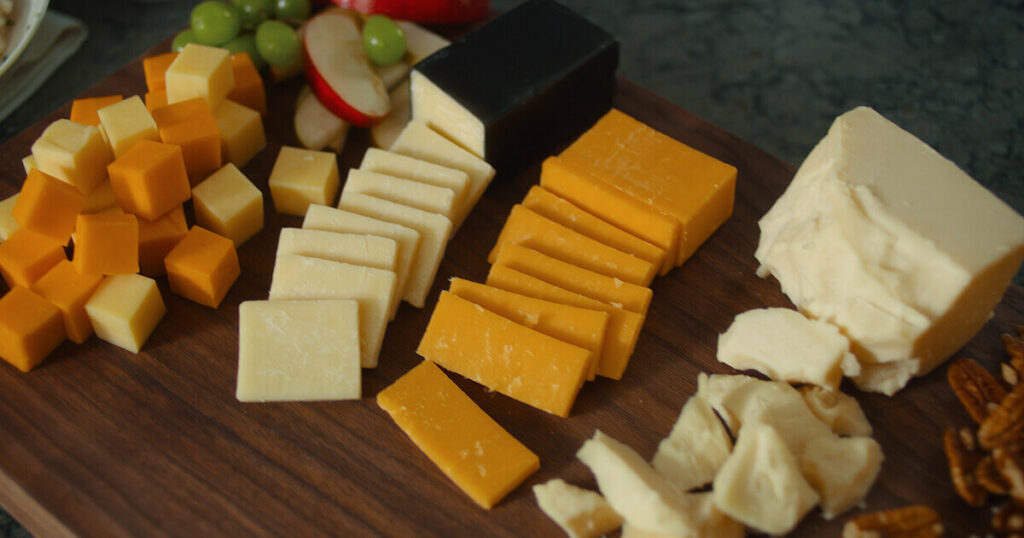
| Type of Cheddar | Aging Period | Color | Texture | Flavor |
|---|---|---|---|---|
| Mild Cheddar | 2-3 months | White to pale yellow | Soft, smooth | Gentle, creamy |
| Medium Cheddar | 5-6 months | White to pale yellow | Slightly firmer | Balanced, slightly sharper |
| Mature Cheddar | 9 months – 1 year | White to deep orange | Firm | Robust, tangy |
| Extra Mature Cheddar | 1.5-2 years | White to deep orange | Very firm, may have calcium lactate crystals | Intensely rich, tangy |
| Vintage Cheddar | 2+ years | White to deep orange | Crumbly, likely to have calcium lactate crystals | Extremely complex, strong, nutty |
What is Cheddar Best for?
Here are some of the best uses for Cheddar:
- Baking: Cheddar’s melting quality makes it perfect for baking. It can be used in cheese scones, bread, muffins, or biscuits.
- Sandwiches and Burgers: A slice of Cheddar can add a rich, tangy flavor to sandwiches and burgers. It melts beautifully, creating a gooey and delicious layer.
- Macaroni and Cheese: Cheddar is often the star ingredient in macaroni and cheese due to its creamy texture when melted and its strong flavor.
- Cheese Sauce: Cheddar can be used to create a rich and flavorful cheese sauce for pasta, vegetables, or meat dishes.
- Pizza Topping: While not traditional, Cheddar can be used as a pizza topping, either on its own or mixed with other cheeses.
- Grated Over Dishes: Grated Cheddar can be sprinkled over a range of dishes like salads, soups, tacos, and baked potatoes.
- Cheese Board: Last but not least, Cheddar is a great addition to any cheese board, paired with a variety of fruits, nuts, and crackers.
Remember, the uses for Cheddar cheese can vary depending on the age of the cheese.
Younger Cheddar tends to be softer and milder, making it great for melting, while aged Cheddar is harder and has a stronger flavor, making it excellent for grating or eating on its own.
What Type of Cheese is Cheddar?
Cheddar cheese is a type of hard, aged cheese that is known for its rich, nutty flavor that becomes sharper and more complex as it ages.
Does Cheddar Cheese Melt?
Yes, cheddar cheese does melt.
In fact, it’s known for its excellent melting qualities which makes it a popular choice in many dishes, such as grilled cheese sandwiches, macaroni and cheese, cheeseburgers, and nachos.
However, the meltability of cheddar can vary depending on its age. Younger, milder cheddars typically melt more smoothly and easily than aged, sharper cheddars. This is because as cheddar ages, it loses moisture and its protein structure changes, which can make it more resistant to melting. Aged cheddar may become grainy or separate when melted, but it still can be used in cooking for its intense flavor.
What Fruits and Alcohol Pair Well With Cheddar?
Fruits:
- Apples and Pears: The crisp sweetness of apples and pears contrasts beautifully with the sharpness of cheddar.
- Grapes: Both red and green grapes work well. Their natural sweetness and juiciness provide a nice balance to cheddar’s savory taste.
- Dried Fruits: Dried apricots, figs, and dates can also pair well with cheddar, offering a concentrated sweetness that complements the cheese’s savory flavor.
Alcohol:
- Red Wine: Full-bodied red wines like Cabernet Sauvignon or Syrah can stand up to the strong flavor of cheddar.
- White Wine: If you prefer white wine, try a Chardonnay or a crisp Sauvignon Blanc.
- Beer: Traditional British ales, stout, or amber beers pair excellently with cheddar cheese.
- Cider: The sweetness of apple cider contrasts nicely with the savory, sometimes sharp flavor of cheddar cheese.
- Whiskey: Particularly with aged cheddar, a good whiskey can complement the cheese’s rich, nutty flavors.
Also read: Best Wine and Cheese Pairings: The Ultimate Guide
Can I Serve Cheddar with Crackers or Bread?
Absolutely, cheddar cheese pairs wonderfully with both crackers and bread. Here are a few ways you can serve them:
Crackers:
- Cheese Platter: Arrange slices or cubes of cheddar on a platter with a variety of crackers. This allows guests to choose their preferred combination.
- Canapés: Top crackers with a slice of cheddar and a dollop of chutney or a slice of apple for a simple, tasty canapé.
- Snack: Just having some crackers and cheddar cheese makes for a great quick snack.
Bread:
- Sandwiches: Cheddar makes for a delicious sandwich filling, especially when paired with ham, turkey, or just a spread of good-quality butter.
- Toasties/Grilled Cheese: Cheddar is perfect for toasties or grilled cheese sandwiches because it melts so well.
- Cheese and Bread Platter: Much like with crackers, you can serve cheddar on a platter with slices of fresh, crusty bread.
- Bruschetta: Toast slices of baguette or sourdough, rub with a cut clove of garlic, top with a slice of cheddar and place under the broiler until the cheese is bubbling and golden.
Also read: 11 Best Crackers that Pair Well with Cheese
Is Cheddar Good or Bad for Health?
Like many foods, cheddar cheese can be both good and bad for your health depending on how much you consume and your individual health needs.
Benefits:
- Nutrient-Rich: Cheddar is a good source of protein and calcium, which are important for muscle function and bone health, respectively. It also provides other key nutrients such as vitamin A, vitamin B12, zinc, and phosphorus.
- Satiety: The protein and fat in cheddar cheese can help you feel full and satisfied, which could potentially aid in weight management.
Drawbacks:
- High in Saturated Fat: Cheddar contains a significant amount of saturated fat. While your body needs some fat for energy and other functions, too much saturated fat can raise your cholesterol levels and increase your risk of heart disease.
- Calorie-Dense: Cheese is high in calories, so it can contribute to weight gain if you eat too much of it without burning off the extra calories through physical activity.
- High in Sodium: Like many cheeses, cheddar can be high in sodium, which can contribute to high blood pressure in some individuals.
The truth is that cheddar can be part of a balanced diet when consumed in moderation. If you have specific dietary concerns or health conditions, it’s always a good idea to talk to a healthcare provider or a dietitian.
Sources:
- Healthline
- USDA FoodData Central
- American Journal of Clinical Nutrition
- American Heart Association
- Mayo Clinic
- CDC
Best Cheddar substitutes
| Cheddar Substitute | Description |
|---|---|
| American Cheese | Known for its smooth and creamy texture, it’s a good substitute in sandwiches and burgers. |
| Colby Cheese | Similar to Cheddar but milder and softer in texture, great for melting. |
| Swiss Cheese | It has a distinctive flavor and melts well making it a good alternative for Cheddar in cooking. |
| Blue Cheese | It has a strong and tangy flavor, adding a different twist to dishes requiring Cheddar. |
| Gouda Cheese | Mildly flavored with a rich, buttery, slightly sweet taste and smooth, creamy texture. |
| Parmesan Cheese | Hard, granular cheese that’s great for toppings and can add a unique flavor to dishes. |
| Brick Cheese | Mild, medium to hard cheese, creamy and slightly sweet, it melts well making it a good alternative. |
| Mozzarella Cheese | Mild and creamy flavor with a stringy texture when melted, similar to Cheddar. |
| Cantal Cheese | Known as the cousin of Cheddar, it’s a stronger-tasting cheese perfect for those who prefer a robust flavor. |
| Edam Cheese | A mild-flavored cheese that is softer and less aged than Cheddar but can still offer a similar flavor profile. |
Frequently Asked Questions
1. Is Cheddar Cheese Vegetarian?
The answer is: yes and a no, depending on the specific type of cheddar cheese in question.
Cheddar cheese can be made using animal rennet, a set of enzymes produced in the stomachs of ruminant animals, or microbial rennet, which is derived from molds.
While cheeses made with microbial rennet are suitable for vegetarians, those made with animal rennet are not.
Ultimately, the key to knowing whether a particular cheddar cheese is vegetarian lies in checking the ingredients list for the type of rennet used. If you’re a vegetarian and unsure about a specific cheese, it’s always best to contact the manufacturer directly for clarification.
2. How to properly store Cheddar?
Proper storage of cheddar cheese can extend its shelf life and retain its quality. Here are several tips on how to properly store cheddar cheese:
- Refrigeration: Cheddar cheese should be stored in the refrigerator, ideally at temperatures between 35°F and 40°F (1.6°C to 4.4°C).
- Wrap Properly: After opening, it’s important to wrap the cheese properly to prevent it from drying out. Cheese paper, wax paper or parchment paper followed by a layer of plastic wrap is ideal. Avoid wrapping cheese in only plastic wrap as it can encourage mold growth.
- Seal Tight: Store the wrapped cheese in an airtight container or resealable bag to keep it fresh and protect it from absorbing other odors in the refrigerator.
- Separate Different Cheeses: If you’re storing several types of cheese, keep them separate to prevent cross-contamination and mixing of flavors.
- Freezing: While freezing can extend the life of cheddar cheese, it can alter its texture, making it more crumbly. It’s best used for cooking or baking purposes once thawed.
Remember to always check the cheese before consuming. If there’s mold, discoloration, or an off smell, it’s safer to discard it.
3. Why is Cheddar cheese so strong?
The strong flavor of cheddar cheese is primarily due to two factors: the aging process and the bacteria used in its production.
Aging Process:
Cheddar cheese is often aged for several months to years. The longer the cheese is aged, the stronger its flavor becomes.
During this time, the cheese develops a complex flavor profile and a firmer texture. This is why you’ll often see cheddar cheese labeled with terms like “mature” or “extra mature,” indicating a stronger, more intense flavor.
Bacteria:
The specific strains of bacteria used in the fermentation process also contribute to the flavor of cheddar cheese. These bacteria convert the lactose in milk into lactic acid, which gives the cheese its characteristic tanginess. Some types of bacteria also release compounds that add to the aroma and flavor of the cheese.
So, the strength of Cheddar’s flavor can vary significantly depending on how long it has been aged and the specific methods and ingredients used in its production.
4. Is cheddar cheese better than butter?
Whether cheddar cheese is “better” than butter largely depends on the context in which you’re comparing them – taste, nutritional value, dietary restrictions, or cooking uses.
Taste: This is subjective and depends on personal preference. Some people may prefer the rich, creamy taste of butter, while others might prefer the sharp, tangy flavor of cheddar cheese.
Nutritional Value:
- Cheddar cheese is high in protein and calcium but also contains a significant amount of saturated fat and cholesterol.
- Butter, on the other hand, does not provide as much protein or calcium but is also high in saturated fat and cholesterol.
Therefore, both should be consumed in moderation as part of a balanced diet.
Dietary Restrictions: If you’re lactose intolerant or vegan, both cheddar cheese and butter may not be suitable for your diet unless you opt for lactose-free or vegan versions.
Cooking Uses: Both cheddar cheese and butter have different roles in cooking. Butter is often used for baking, sautéing, and as a spread, while cheddar cheese is commonly used in dishes like casseroles, pasta, and sandwiches for its flavor and meltability.
In conclusion, neither cheddar cheese nor butter is inherently “better” than the other. The choice between the two will depend on various factors including your dietary needs, cooking requirements, and personal preferences.
Also read:

